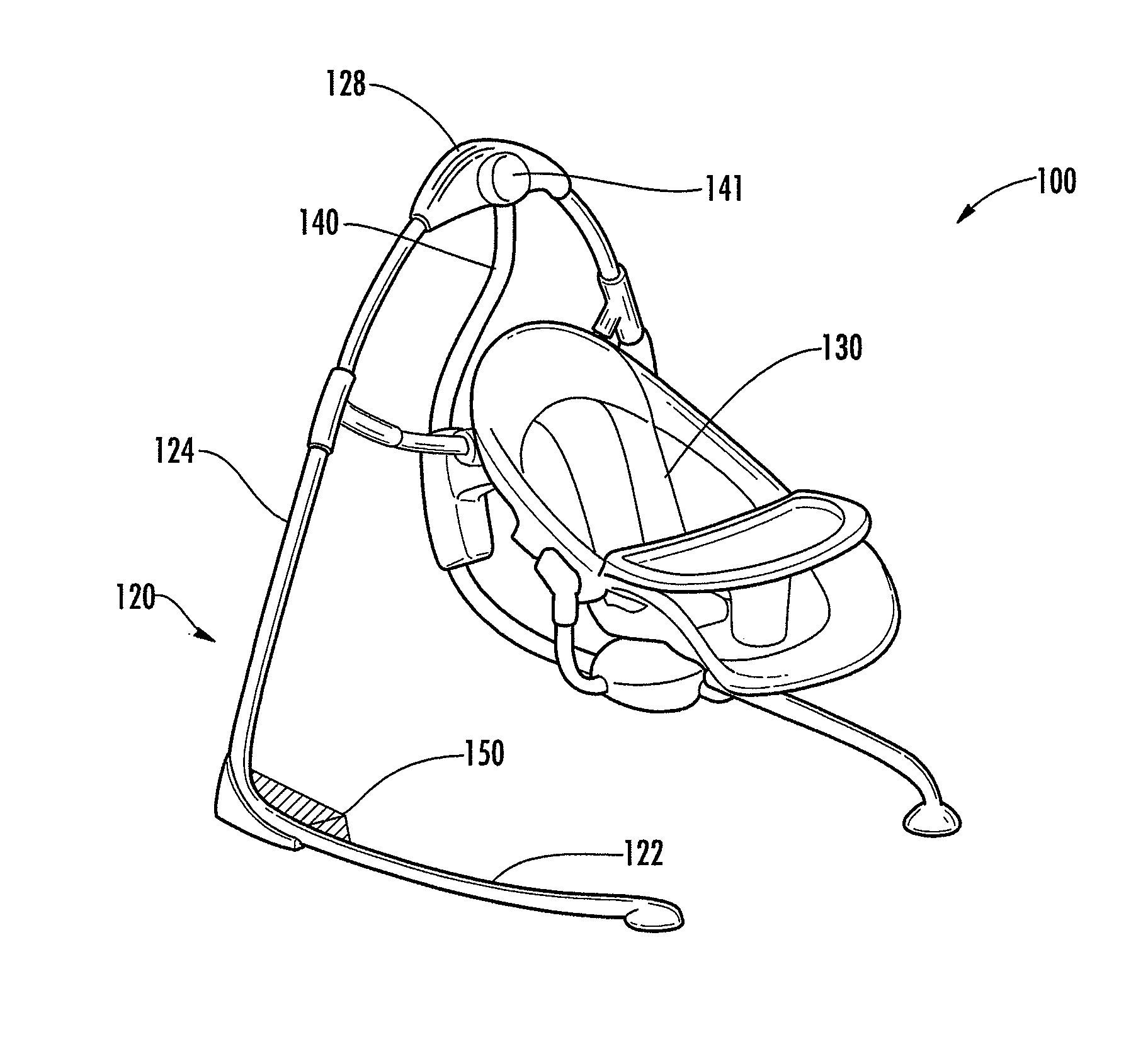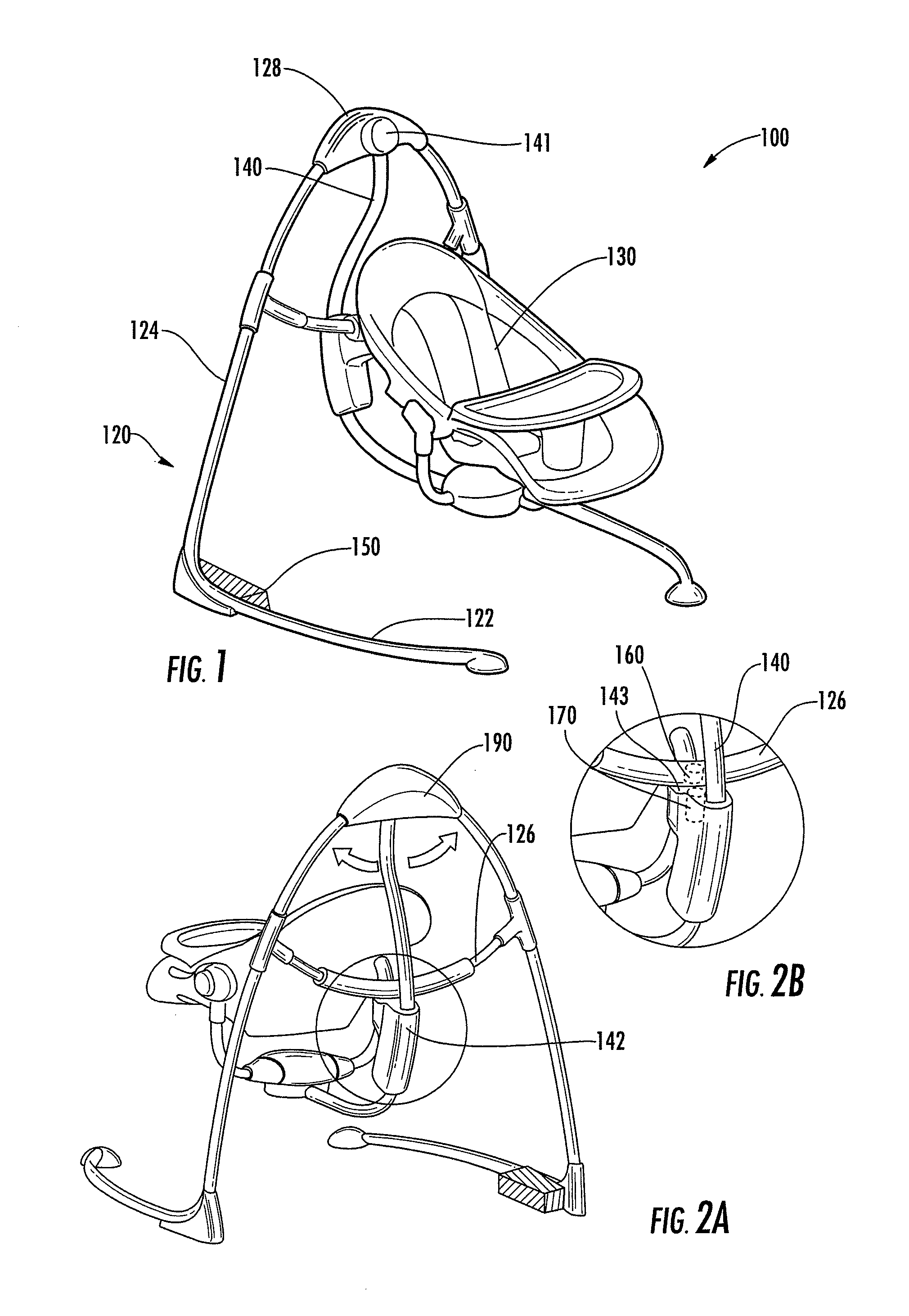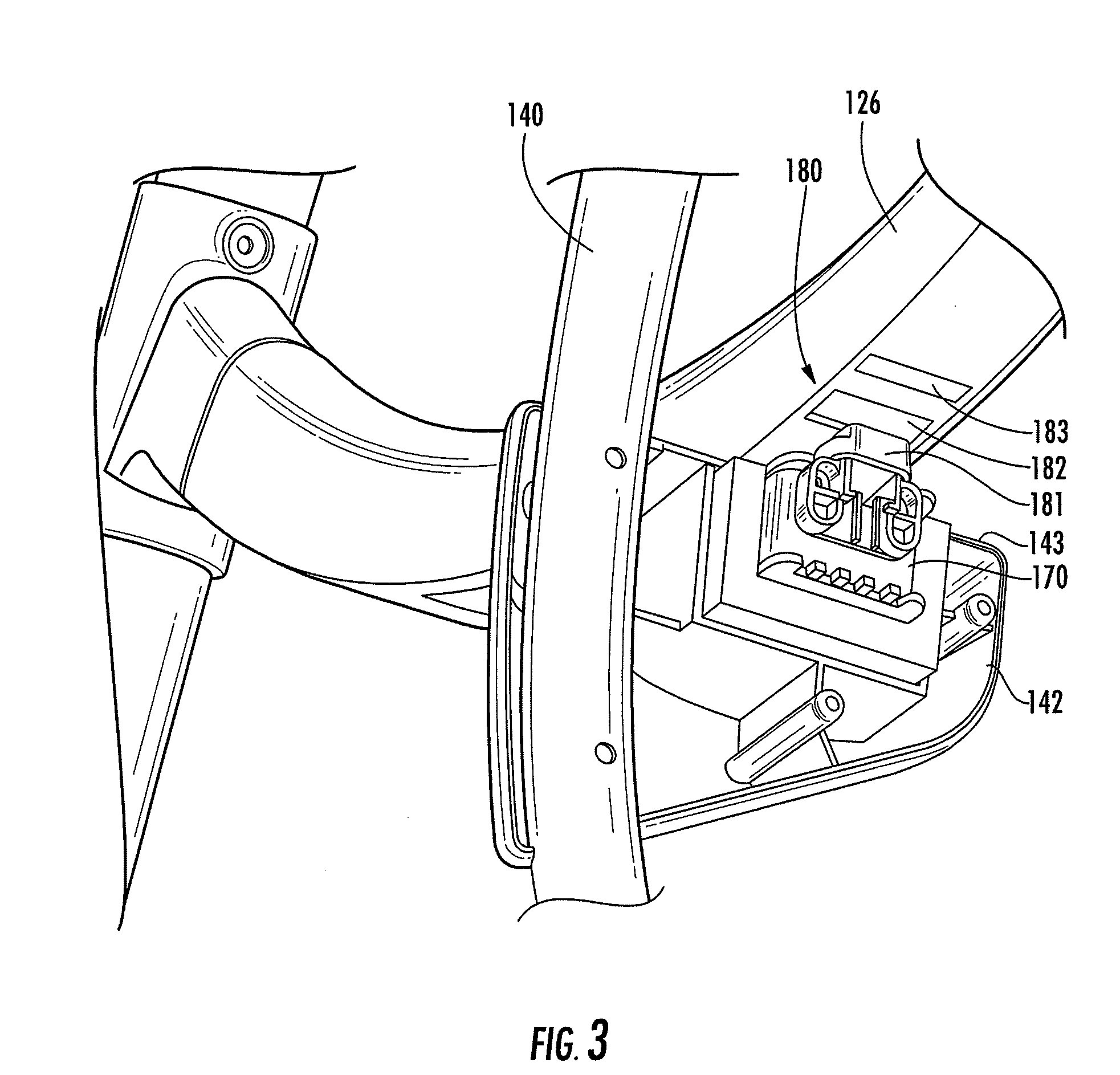Electromagnetic Swing
a technology of electromagnetic swing and swing, applied in the field of electromagnetic swing, can solve the problems of reducing the power efficiency of only effective current magnetic drive system, and limiting the ability of such swings to control the dynamics of swing motion
- Summary
- Abstract
- Description
- Claims
- Application Information
AI Technical Summary
Benefits of technology
Problems solved by technology
Method used
Image
Examples
Embodiment Construction
[0028]The present invention now will be described more fully hereinafter with reference to the accompanying drawings, in which embodiments of the invention are shown. This invention may, however, be embodied in many different forms and should not be construed as limited to the embodiments set forth herein; rather, these embodiments are provided so that this disclosure will be thorough and complete, and will fully convey the scope of the invention to those skilled in the art. Like numbers refer to like elements throughout.
[0029]As described above, various embodiments of the present invention are directed to a powered children's swing providing a seat that is driven along a swing path with controlled amplitude by a magnetic drive system. According to various embodiments, the powered children's swing generally includes a swing frame, seat, swing arm, magnetic drive system, power supply, swing motion sensor, and swing control circuit. As described above, in one embodiment, the magnetic ...
PUM
 Login to View More
Login to View More Abstract
Description
Claims
Application Information
 Login to View More
Login to View More - R&D
- Intellectual Property
- Life Sciences
- Materials
- Tech Scout
- Unparalleled Data Quality
- Higher Quality Content
- 60% Fewer Hallucinations
Browse by: Latest US Patents, China's latest patents, Technical Efficacy Thesaurus, Application Domain, Technology Topic, Popular Technical Reports.
© 2025 PatSnap. All rights reserved.Legal|Privacy policy|Modern Slavery Act Transparency Statement|Sitemap|About US| Contact US: help@patsnap.com



